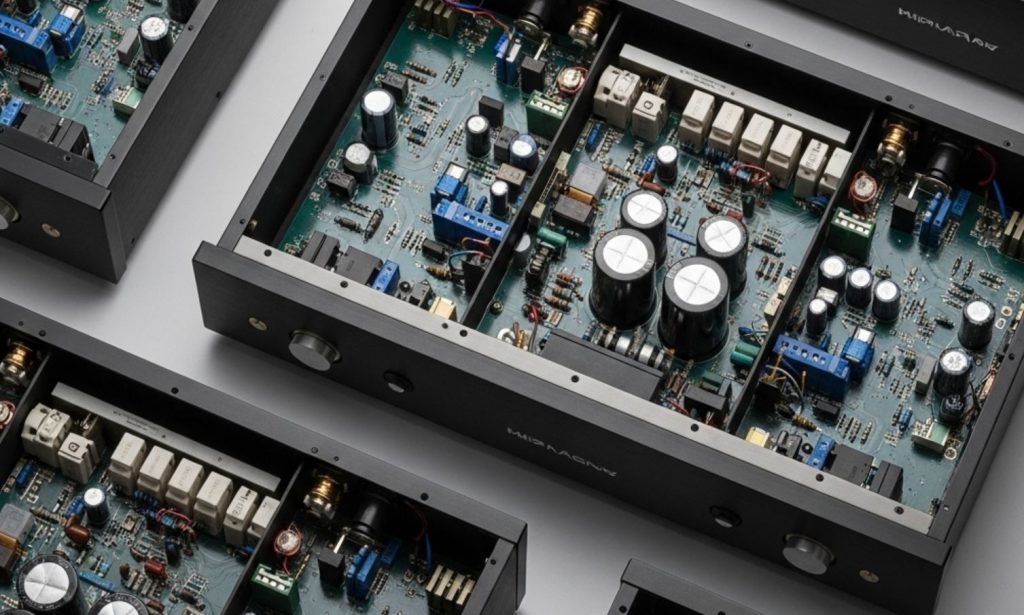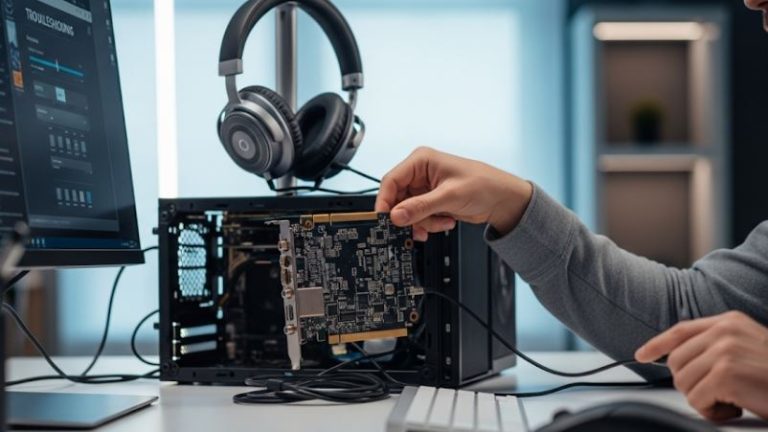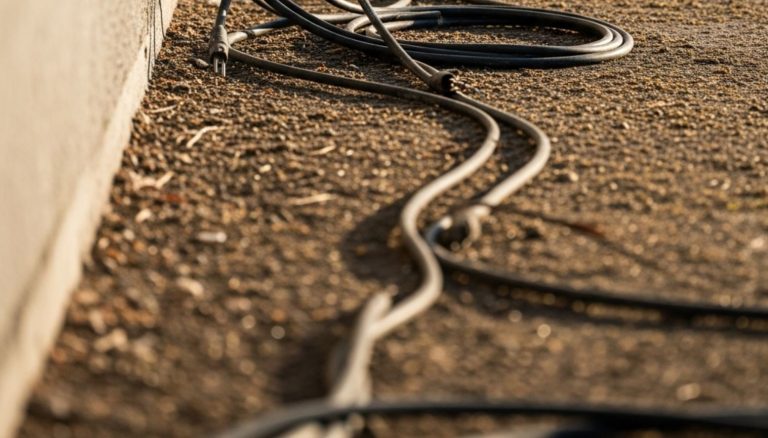
The amplifier, often an unassuming black box in an audio setup, is in reality a cornerstone of sonic performance. It’s the heart that pumps life into your music, taking a delicate low-level audio signal and imbuing it with the power necessary to drive loudspeakers. But not all amplifiers are created equal. The „good sound” we seek is a complex interplay of electronic design principles, component quality, and meticulous construction.
While the perception of „good sound” can be subjective, certain amplifier topologies and design philosophies have consistently demonstrated their ability to deliver high-fidelity audio reproduction – that is, sound that is true to the original recording. We will journey through the nuances of these designs, from the purist Class A to the efficient Class D and the hallowed vacuum tube.
💡 Key Concepts in Amplifier Sound Quality
Before dissecting specific amplifier classes, it’s essential to understand some fundamental concepts that define an amplifier’s contribution to sound quality:
- Fidelity: This refers to the accuracy of the sound reproduction. A high-fidelity amplifier aims to amplify the signal without adding or subtracting anything, preserving the original timbre, dynamics, and spatial cues.
- Distortion: Any unwanted alteration to the original audio signal is distortion. The two main types are Total Harmonic Distortion (THD) and Intermodulation Distortion (IMD).
- THD refers to harmonics (multiples of the original frequencies) added to the signal. While all amplifiers produce some THD, lower levels are generally better. The type of harmonic distortion also matters; even-order harmonics (2nd, 4th, etc.) are often perceived as more musically consonant or „warm,” while odd-order harmonics (3rd, 5th, etc.) can sound harsh or dissonant.
- IMD occurs when two or more frequencies interact to create new, non-harmonically related frequencies. IMD can make music sound muddled or confused and is generally considered more detrimental to sound quality than THD.
- Signal-to-Noise Ratio (SNR): This measures the level of the desired audio signal compared to the level of background noise (hiss, hum) produced by the amplifier. A higher SNR is desirable, indicating a quieter amplifier that allows more subtle musical details to emerge.
- Frequency Response: This indicates the range of frequencies an amplifier can reproduce and how evenly it does so. Ideally, an amplifier should have a flat frequency response across the entire audible spectrum (typically 20 Hz to 20 kHz) and often beyond, ensuring that all tones are reproduced at their correct relative loudness.
- Damping Factor: This is a measure of an amplifier’s ability to control the movement of a loudspeaker’s cone, particularly at resonant frequencies. A higher damping factor generally means tighter, more controlled bass and improved transient response. It’s a ratio of the speaker’s nominal impedance to the amplifier’s output impedance.
- Power Output and Headroom: An amplifier must provide sufficient power to drive the connected loudspeakers to desired listening levels without clipping (a severe form of distortion where the peaks of the waveform are cut off). Dynamic headroom refers to an amplifier’s ability to deliver short bursts of power significantly above its continuous power rating to handle musical peaks cleanly.
- Build Quality: Beyond the circuit design, the physical construction and quality of components play a massive role. This includes the chassis, connectors, internal wiring, and, crucially, the power supply components.
Amplifier Classes and Their Sonic Signatures ⚙️
Amplifiers are categorized into „classes” based on their circuit topology, specifically how their output devices (transistors or vacuum tubes) operate. Each class has inherent characteristics affecting efficiency, distortion, and, ultimately, sound quality.
Class A Amplifiers: The Purist’s Choice
- Electronic Construction: In a Class A amplifier, the output transistors (whether Bipolar Junction Transistors – BJTs or Metal-Oxide-Semiconductor Field-Effect Transistors – MOSFETs) are always conducting current, even when there is no input signal. They operate in the most linear portion of their characteristic curves. This means they amplify the entire audio waveform (both positive and negative halves) without the output devices ever switching off. Designs can be single-ended (using one output device or a set of paralleled devices to handle the entire signal) or push-pull (using complementary devices, but both still conducting fully).
- Sound Quality: 🔊 Class A amplifiers are often hailed by audiophiles for producing the purest and most natural sound. Their continuous operation eliminates crossover distortion – a type of distortion that can occur in other classes when output devices switch on and off. This results in exceptional linearity, remarkable retrieval of low-level detail, a smooth, liquid midrange, and sweet, airy trebles. Many listeners describe Class A sound as „warm,” „holographic,” and effortlessly musical. An excellent overview of Class A amplifiers and their sound characteristics can be found in articles discussing their inherent linearity and low distortion.
- Drawbacks: ⚠️ The primary drawback of Class A operation is its extreme inefficiency, typically around 20-25%. The constant current flow means a significant amount of power is dissipated as heat, regardless of the signal level. This necessitates massive heatsinks and robust, often overbuilt, power supplies, making Class A amplifiers large, heavy, and expensive for their power output. They also consume more electricity.
- Component Quality Focus: To achieve their sonic potential, Class A designs demand high-quality output transistors (often carefully matched), very stable and low-noise power supplies with large capacitor banks, precision resistors (e.g., metal film), and high-grade coupling capacitors if used. The quality of heatsinking is also paramount for long-term reliability.
Class B Amplifiers: Efficiency Over Purity
- Electronic Construction: Class B amplifiers use two sets of output transistors (or tubes). One set handles the positive half of the audio waveform, and the other handles the negative half. Crucially, each transistor (or set) only conducts for 180 degrees of the signal cycle, meaning one switches off completely as the other takes over.
- Sound Quality: 🔊 The main advantage of Class B is its significantly higher efficiency compared to Class A (theoretically up to 78.5%, practically around 50-70%). However, it suffers from a critical flaw: crossover distortion. This occurs during the transition period when one transistor is switching off and the other is switching on. There’s a „dead zone” where neither device is conducting optimally, leading to a notch or discontinuity in the waveform. This distortion is most audible at low signal levels and can manifest as a harsh, grainy, or „thin” sound.
- Modern Relevance: Due to the inherent crossover distortion, pure Class B amplifiers are rarely used in high-fidelity audio applications today. However, their operating principle is fundamental to understanding the much more common Class AB.
- Component Quality Focus: If used, meticulous matching of the complementary output transistors would be essential to minimize the severity of crossover distortion.
Class AB Amplifiers: The Popular Compromise
- Electronic Construction: Class AB is a clever hybrid that seeks to combine the strengths of Class A and Class B. Like Class B, it uses two sets of output devices. However, a small bias current is applied to the output transistors, ensuring that both devices are conducting slightly even when no signal is present, or when the signal is very small. This means that for low-level signals, the amplifier operates in Class A mode, eliminating crossover distortion. As the signal level increases beyond a certain point, one set of transistors will handle more of the waveform, and the amplifier transitions into Class B mode for higher efficiency.
- Sound Quality: 🔊 Well-designed Class AB amplifiers can offer excellent all-around sonic performance, providing a good measure of the smoothness and low distortion of Class A at low volumes, combined with the greater efficiency and power output capability of Class B for dynamic peaks. The quality of the biasing circuit is critical; it must be stable and precisely set to ensure a seamless transition between Class A and Class B operation. The „AB” sonic signature can range from very close to Class A (if biased heavily into Class A, sometimes called „high bias Class AB”) to a more neutral and dynamic presentation.
- Advantages: Good balance of sound quality, efficiency (typically 50-60%), power output, and cost. This makes it the most common amplifier class in home audio.
- Component Quality Focus: As with Class A, matched output devices are beneficial. A stable and well-designed biasing circuit is paramount. Quality power supply components, including good filtering and regulation, contribute significantly to the sound. Coupling and bypass capacitors in the signal path also play a role.
Class D Amplifiers: The Efficiency Revolution (Switching Amplifiers)
- Electronic Construction: Class D amplifiers, often called switching amplifiers or „digital” amplifiers (though the latter can be a misnomer as the input can be analog), operate on a completely different principle. The output transistors (usually MOSFETs) act as high-speed switches, rapidly turning fully on or fully off. They don’t operate in a linear region like in Class A or AB. The analog input signal is typically converted into a series of high-frequency pulses using Pulse Width Modulation (PWM) or a similar technique (e.g., Pulse Density Modulation – PDM, or more advanced self-oscillating feedback loops). The width (or density) of these pulses corresponds to the amplitude of the audio signal. Finally, a passive low-pass filter (typically consisting of inductors and capacitors) is used at the output to reconstruct the amplified analog audio signal and remove the high-frequency switching noise.
- Sound Quality: 🔊 Historically, Class D amplifiers were viewed with skepticism by many audiophiles. Early designs could sound harsh, sterile, or exhibit sonic artifacts related to switching noise, filter design, and sensitivity to speaker impedance. However, modern Class D technology has made enormous strides. Advanced modulation techniques, sophisticated feedback loops (some including the output filter in the feedback path), faster and more linear switching transistors, and improved filter components have led to Class D designs that can offer exceptional clarity, transparency, incredibly low distortion, powerful bass control, and high neutrality. Leading a lot of these advancements are companies like Hypex (with their Ncore modules) and Purifi Audio (with Eigentakt technology). Further reading on the advancements in Class D technology highlights how far these designs have come.
- Advantages: 🚀 The standout benefit of Class D is its very high efficiency, often exceeding 90%. This means less power is wasted as heat, allowing for smaller, lighter amplifiers that run cooler and can deliver very high power outputs from compact chassis. They are ideal for applications where space, weight, and power efficiency are critical, such as in powered speakers, subwoofers, car audio, and pro audio.
- Key Design Aspects for Quality:
- Modulator: The sophistication of the PWM modulator and error correction/feedback loops (e.g., post-filter feedback) is crucial for minimizing distortion and noise.
- Output Filter: The design and component quality of the output filter are critical. The inductors and capacitors must be high quality to avoid adding distortion or negatively interacting with varying speaker loads.
- Dead Time Control: Precise control of „dead time” (when both sets of output transistors are off to prevent short circuits during switching) is essential to minimize distortion.
- Power Supply: A clean, stable, and responsive power supply is just as important as in linear amplifiers.
- Layout: Careful PCB layout is needed to minimize Electro-Magnetic Interference (EMI) and Radio-Frequency Interference (RFI) generated by the high-speed switching.
- Component Quality Focus: High-speed, low-resistance (RDS(on)) MOSFETs, high-quality inductors (e.g., air-core or with low-loss core materials) and capacitors (e.g., film types with low ESR) in the output filter, and a well-designed control IC.
Class G and Class H Amplifiers: Smart Power Management
- Electronic Construction: Class G and Class H amplifiers are essentially enhancements of the Class AB design, aimed at improving efficiency without resorting to the switching techniques of Class D.
- Class G: Uses multiple power supply rails with different voltages. For low-level signals, the amplifier draws power from a lower voltage rail, operating efficiently. When the signal demands higher output, the amplifier circuitry quickly switches to a higher voltage rail.
- Class H: Is more sophisticated. Instead of discrete rails, it modulates (or „tracks”) the power supply voltage so that it always stays just slightly higher than the instantaneous needs of the output signal. This minimizes the voltage drop across the output transistors, reducing wasted power.
- Sound Quality: 🔊 The sonic goal of Class G and H is to deliver audio performance comparable to high-quality Class AB designs but with improved efficiency, particularly with dynamic music signals where high power is needed only intermittently. The key challenge is to make the rail switching (Class G) or tracking (Class H) completely seamless and inaudible. Well-executed designs achieve this, providing a clean, powerful sound.
- Advantages: Better efficiency than Class AB (though usually not as high as Class D), especially with dynamic program material. This can lead to less heat and potentially more compact designs than a similarly powered Class AB amplifier.
- Component Quality Focus: Similar to Class AB for the core audio path, but with added complexity and demands on the rail switching/tracking circuitry, which must be fast, reliable, and noise-free.
Tube (Valve) Amplifiers: The Timeless Glow 💡
Vacuum tube amplifiers predate solid-state designs but remain highly cherished by a significant segment of audiophiles for their unique sonic qualities.
- Electronic Construction: Instead of transistors, these amplifiers use vacuum tubes (valves) – such as triodes, tetrodes, or pentodes – for amplification.
- Single-Ended Triode (SET): Often operates in Class A and uses a single output tube (or multiple tubes connected in parallel to act as one) per channel to amplify the entire audio waveform. SET circuits are typically very simple. The output transformer, which matches the high impedance of the tube to the low impedance of the speaker, is a critical component.
- Push-Pull: Uses pairs of output tubes (e.g., one for the positive half of the waveform, one for the negative), similar in principle to Class B or AB solid-state designs. Push-pull tube amps can operate in Class A, AB1 (where grid current does not flow), or AB2 (where grid current flows, allowing for more power but requiring a more robust driver stage). They generally produce more power and have lower measured distortion (especially even-order) than SET amps.
- Sound Quality: 🔊 Tube amplifiers are often described as sounding „warm,” „musical,” „liquid,” and possessing a rich harmonic texture.
- SET amplifiers are particularly revered for their magical midrange, lifelike vocal and instrumental timbres, and often a very holographic, three-dimensional soundstage. They tend to produce predominantly even-order harmonic distortion (2nd, 4th, etc.), which many find to be musically pleasant and consonant, adding a sense of richness or fullness. However, SETs typically have low power output (from a few watts to perhaps 20-30 watts for more powerful designs), high output impedance (leading to a lower damping factor and potentially „looser” bass with some speakers), and can be more sensitive to speaker choice.
- Push-pull tube amplifiers generally offer higher power, better bass control (due to higher damping factor and power), and lower overall distortion because the push-pull configuration tends to cancel out even-order harmonics, leaving predominantly odd-order harmonics (though often at lower levels than in SETs). Their sound can range from very smooth and refined to bold and dynamic, depending on the specific tubes and circuit design. The differences between SET and Push-Pull tube amps often spark passionate debate among audiophiles.
- Output Transformers: In most tube amplifiers (except OTL – Output TransformerLess designs), the output transformer is a crucial element. Its quality (core material, winding techniques, bandwidth) profoundly impacts the amplifier’s frequency extension, distortion, and overall sonic character.
- Drawbacks: ⚠️ Tubes have a finite lifespan and need periodic replacement, which can be costly. They generate significant heat, are less efficient than solid-state amplifiers (especially SETs), can be susceptible to microphonics (mechanical vibrations affecting the sound), and generally have higher measured distortion and lower damping factors than their solid-state counterparts.
- Component Quality Focus: The quality of the vacuum tubes themselves is paramount (New Old Stock – NOS – tubes are often highly prized for specific sonic characteristics). Output transformers and power supply transformers are critical. High-quality coupling capacitors (often paper-in-oil, foil, or other exotic types), resistors, and careful point-to-point wiring (in some boutique designs) also contribute.
Beyond Amplifier Class: Other Crucial Factors for Sound Quality 🛠️
While the amplifier class sets a foundational sonic direction, numerous other design and construction aspects are equally, if not more, important in achieving true high-fidelity sound.
-
Power Supply Design:
- Often called the „heart” of an amplifier, the power supply is absolutely critical. A robust, well-regulated, and low-noise power supply provides the clean and stable DC voltage that the amplifier circuits need to operate optimally.
- Transformer: Large, low-noise transformers (toroidal transformers are often preferred for their lower stray magnetic fields) are a good start.
- Rectification and Smoothing: Fast, quiet rectifier diodes and a substantial bank of high-quality filter capacitors (with low Equivalent Series Resistance – ESR, and high ripple current capability) are needed to convert AC to smooth DC and provide current reserves for dynamic peaks.
- Regulation: Some designs use regulated power supplies for the input and driver stages, or even for the output stage, to ensure stable voltages regardless of AC line fluctuations or signal demands. The design of the power supply can significantly influence an amplifier’s ability to deliver clean power.
- Dual Mono: In high-end designs, a dual mono configuration is often employed. This means each audio channel has its own completely separate power supply (sometimes even separate transformers), minimizing crosstalk between channels and improving stereo separation and imaging.
-
Component Selection and Quality:
- The adage „a chain is only as strong as its weakest link” applies perfectly here.
- Resistors: Tight tolerance (e.g., 1% or better), low-noise types like metal film resistors are common. Some designers may use carbon composite resistors in specific locations for their sonic flavor, though they are typically noisier.
- Capacitors: This is a vast topic. Capacitors in the signal path (coupling capacitors) have a particularly significant impact on sound. Common dielectric materials include polypropylene, polystyrene, polyester, and, in tube amps, paper-in-oil. Electrolytic capacitors are usually found in power supplies due to their high capacitance values, but their quality (ESR, lifespan, temperature rating) matters greatly.
- Transistors/Tubes: Beyond the basic type, specific models of transistors or tubes are chosen for their sonic characteristics, linearity, and reliability. Output devices are often matched (especially in push-pull and Class AB/B designs) to ensure symmetrical operation.
- Internal Wiring: The quality of internal wiring (e.g., oxygen-free copper, silver) and the layout (e.g., keeping signal paths short, separating power and signal wiring) can influence noise and signal integrity. Star grounding techniques are often used to minimize ground loop hum.
- Connectors: High-quality, gold-plated input connectors (RCA, XLR) and speaker binding posts ensure good electrical contact and minimize signal degradation over time.
-
Circuit Topology and Design Philosophy:
- Feedback (Negative Feedback – NFB): This is a technique where a portion of the output signal is fed back to an earlier stage out of phase, which can significantly reduce distortion, increase bandwidth, and control output impedance (improving damping factor). However, the amount and implementation of NFB are contentious. Excessive or poorly implemented NFB can, according to some listeners, deaden the sound, reduce micro-dynamics, or introduce a „processed” character. Some designs aim for zero global negative feedback, relying on inherently linear open-loop performance, though these designs can be more challenging and costly to execute well. The application of negative feedback is a complex topic with both benefits and potential sonic trade-offs.
- Signal Path Length: The „less is more” philosophy often applies. Shorter, more direct signal paths with fewer components can potentially lead to a purer, more transparent sound by minimizing opportunities for signal degradation, noise pickup, and phase shift.
- Symmetrical vs. Asymmetrical Design: Fully balanced (differential) circuit topology from input to output can offer superior common-mode noise rejection, potentially leading to a cleaner sound, especially in environments with high EMI/RFI or when using long interconnect cables.
- DC Coupling: Some amplifiers are DC-coupled, meaning they don’t use capacitors in the signal path to block direct current. This can, in theory, improve phase response and bass performance, but requires careful design to prevent DC from reaching the speakers, which could damage them. Servo circuits are often used to control DC offset.
-
Mechanical Construction and Shielding:
- The physical construction of the amplifier also plays a role. A rigid, well-damped chassis (often made of aluminum or steel) helps to minimize the effects of mechanical vibrations and microphonics, which can subtly degrade sound quality, especially in tube amplifiers or sensitive low-level circuits.
- Shielding against Electro-Magnetic Interference (EMI) and Radio-Frequency Interference (RFI) is important. This can involve internal shielding of sensitive sections (like the phono stage or input circuitry) and careful overall layout.
- Thermal Management: Proper heatsinking and ventilation are crucial not only for reliability but also because the operating temperature of components can affect their performance characteristics.
-
Speaker Matching:
- It’s crucial to remember that an amplifier doesn’t exist in a vacuum. Its performance is inextricably linked to the loudspeakers it is paired with. Factors like the speaker’s impedance curve (not just nominal impedance), sensitivity, and overall electrical characteristics will influence how the amplifier behaves and sounds. An amplifier that sounds sublime with one pair of speakers might sound mediocre with another. For instance, low-power SET amplifiers typically pair best with high-efficiency speakers.
Conclusion: The Symphony of Design
Achieving outstanding sound quality in an amplifier is not merely about choosing a particular class of operation or using expensive parts. It’s about a holistic approach to design, where every aspect – from the fundamental circuit topology and power supply architecture to the selection and layout of individual components, and even the mechanical construction – is carefully considered and optimized to work in harmony. 🎶
There is no single „best” amplifier type that suits everyone. Class A offers unparalleled purity for those who can accommodate its inefficiencies. Class AB provides a versatile and high-performing balance for many. Modern Class D delivers astonishing power and clarity with remarkable efficiency. And tube amplifiers continue to captivate with their unique warmth and musicality.
Ultimately, the choice of amplifier will depend on individual listening preferences, the characteristics of the rest of the audio system (especially loudspeakers), room acoustics, and budget. Critical listening and, where possible, auditioning different amplifier types with familiar music and your own speakers, remain the most reliable ways to find an amplifier that truly makes your music sing. The journey to sonic excellence is one of careful consideration and delightful discovery.














